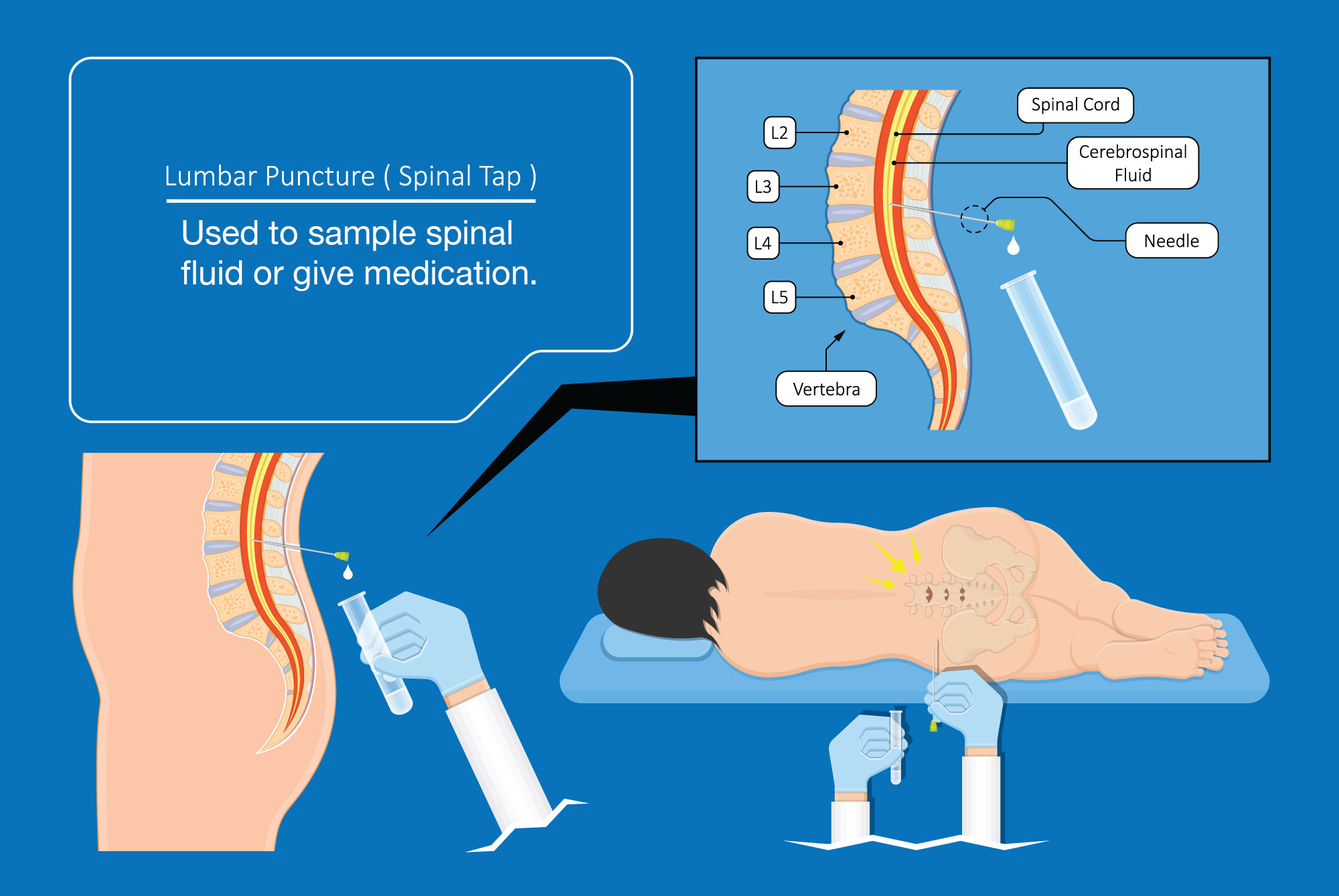Lumbar Puncture
A lumbar puncture (LP), also known as a spinal tap, is a procedure used to access the cerebrospinal space. The cerebrospinal space is the area around the spine and brain that holds cerebrospinal fluid (CSF). CSF is a colorless fluid made in the ventricles of the brain. CSF acts as a buffer around the brain and spinal cord to keep them safe from injury. Your provider may want access to your cerebrospinal space during an LP to get spinal fluid for testing or to give you medication.
What is a lumbar puncture used for?
An LP may be needed to diagnose and treat some types of cancer. CSF can be removed and tested for cancer cells. Chemotherapy can be given directly into the cerebrospinal space during an LP to treat some types of cancer. An LP can also be used to diagnose other medical problems, such as meningitis and multiple sclerosis (MS).
How is the procedure done?
Before having an LP, you will have blood drawn to check your labs. Your platelet count needs to be at a certain level so that your blood can clot at the needle site after the LP. Your provider will also talk to you about medications or allergies you have that could affect the procedure.
- Your provider will position you so that your spine is stretched out. This creates space between the bones in the back, making the cerebrospinal space easier to reach.
- You will be told to either lie on your side or you will sit on the edge of your bed and rest your chest, arms, and head on a tray or chair that has been placed in front of you, with your feet dangling off the bed.
- Once you are comfortable, your provider will feel your back to find the best place to place the lumbar puncture needle. It is important to stay still during this time unless you are told to move. Once your provider has found where to place the needle, the area will be marked with a marker or with a piece of plastic to make an indent in the skin.
- Your provider will put on sterile (very clean) gloves. The area is cleaned with soap to prevent any germs from entering the CSF. You will have a sterile drape placed on your back to cover the area not needed for the lumbar puncture.
- Next, your provider will use a needle to place numbing medication in the area where the LP is being done. You may feel some burning or pressure for a few seconds before the numbness starts. Your provider will touch the area and ask if you can feel it to make sure it is numb.
- A long, thin needle is used to enter the cerebrospinal space where it was marked and numbed. You may feel pressure, but you should not feel pain. It is important for you to stay as still as possible. If you need to move, you must ask your provider first. If you are feeling pain, tell your provider right away.
- Once the needle is in the right space, CSF is collected in test tubes. If you are receiving chemotherapy, it is infused through this needle directly into the CSF. The whole procedure often takes about 15-30 minutes.
- Once the procedure is done, the needle is removed. A dressing is placed where the needle was removed. You will need to lie flat, often for about 60 minutes. When CSF is removed and there is less CSF in your body than normal, it can cause a headache. Lying flat will prevent a headache while your body makes more CSF to replace what was removed. If you do have a headache, tell your provider.
If you have any other side effects, such as dizziness, bleeding from the needle insertion site, blurry vision, confusion, or nausea and/or vomiting that doesn’t get better, tell your provider right away.
A lumbar puncture may be needed to diagnose and treat your cancer. Talk with your provider about why you are getting an LP and ask any questions you may have.
